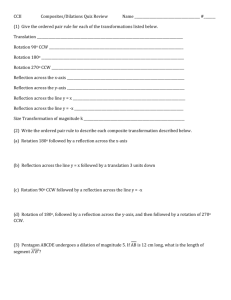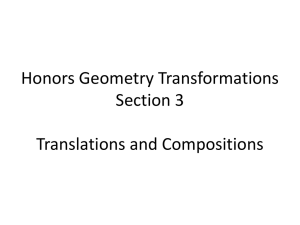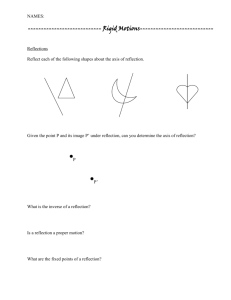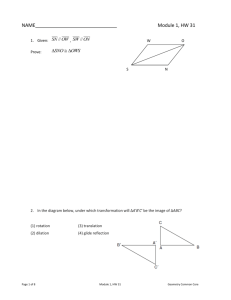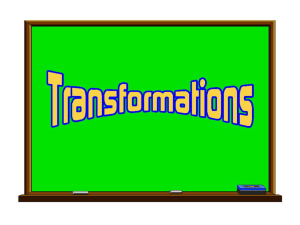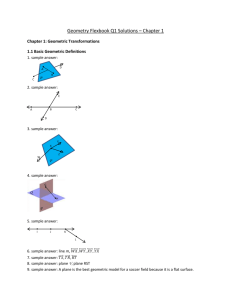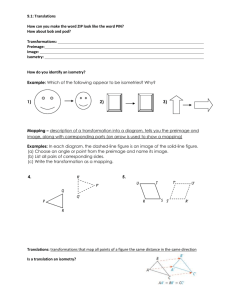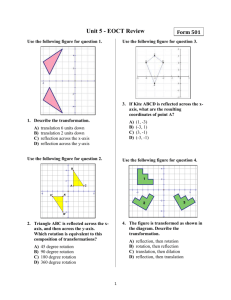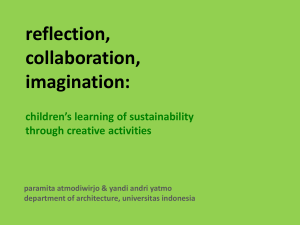Geometry
advertisement
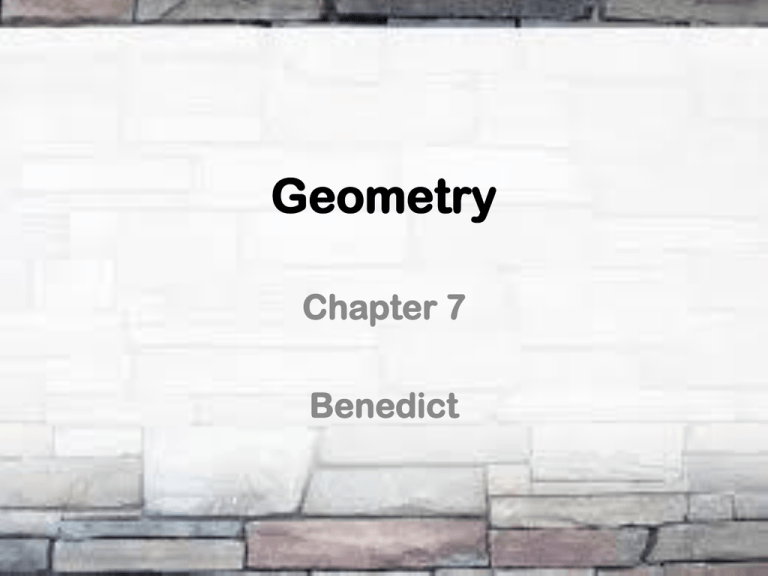
Geometry Chapter 7 Benedict Vocabulary Image- Figures can be reflected, rotated, or translated to produce new figures. Preimage- The original figure of an image. Transformation- Moving the pre-image onto the image. Vocabulary Image- Figures can be reflected, rotated, or translated to produce new figures. Preimage- The original figure of an image. Transformation- Moving the pre-image onto the image. Vocabulary Types of Transformations Translation Practice Draw a figure below and use the three basic transformations to redraw your original shape. Vocabulary Reflections- A transformation that uses a line that acts like a mirror with an image reflected in the line. Line of Reflection- the mirror line. Reflection Theorem- A reflection is isometry. Line of Symmetry- The figure can be mapped onto itself by a reflection in the line. Practice Using your iPad or book; draw a picture of a reflection. Label the line of reflection and the line of symmetry. Vocabulary Rotation- a transformation in which the figure is turned about a fixed point. Center of Rotation- the fixed point, about which the figure moves. Angle of Rotation- The point and its image for an angle. Rotation Theorem- A rotation is an isometry. Practice Using your iPad or book, draw a picture of a rotation. Label the center and angle of rotation. Vocabulary Rotational Symmetry- If the figure can be mapped onto itself by a rotation of 180° or less. Theorem 7.3- If lines k and m intersect at point P, then a reflection in k followed by a reflection in m is a rotation about point P. Vocabulary Translation- A transformation that maps every to points P and Q in the plane to points P’ and Q’, so that the following properties are true. • PP’ = QQ’ • PP’ is parallel to QQ’ or PP’ and QQ’ are collinear Translation Theorem- A translation is an isometry. Practice Using your iPad or book, draw a picture of a translation. Label the points and lines in the drawing. Vocabulary Vector- A quantity that has both direction and magnitude, or size, and is represented by an arrow drawn between two points. Initial Point- Starting point of a vector. Terminal Point- Ending point of a vector. Component Form- A vector that combines vertical and horizontal components. Practice Below draw a picture of a vector, label the initial and terminal point: Vocabulary Glide Reflection- A transformation in which every point P is mapped onto a point P” by the following steps. 1. A translation maps P onto P’. 2. A reflection in a line k parallel to the direction of the translation maps P’ onto P”. Composition- When two or more transformations are combine to produce a single transformation. Practice Using your iPad or book draw a picture of a glide reflection below: Vocabulary Composition Theorem- The composition of two (or more) isometries is an isometry. Frieze Pattern/Border Pattern- A pattern that extends to the left and right in such a way that the pattern can be mapped onto itself by a horizontal translation. Practice Draw the following Frieze Patterns below: • • • • • Translation Translation about 180° rotation Reflection in a horizontal line Reflection in a vertical line Horizontal glide reflection

